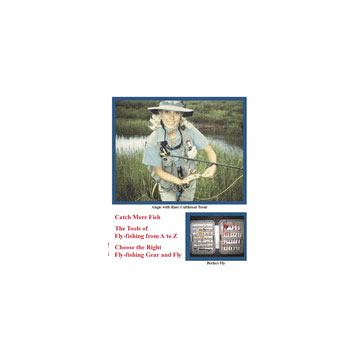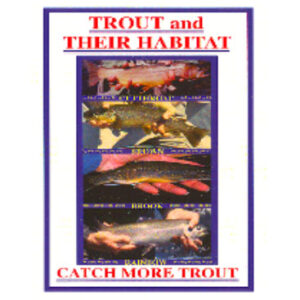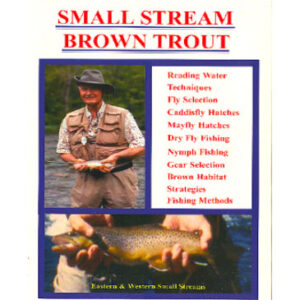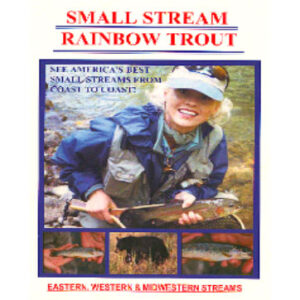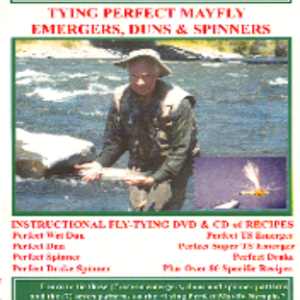Fly fishing basics of choosing the right fly, fly line, fly rod, fly reel, leader, tippet, etc. for your particular needs and requirements is a step in the right direction towards success on any fly-fishing excursion. The purpose, function and features of each fly-fishing tool, fly rod, fly reel, fly line, flies, waders, etc. , including its construction and material, are thoroughly covered.
This “encyclopedia of fly fishing gear” covers the complete spectrum of fly fishing rods, fly reels, backing, fly lines, leaders, tippets, waders, boots, accessories and much more.
Example Script:
The following are some fly fishing basics that you should know if you are going to consistently catch trout. Smaller size leaders are designated by their length and the tippet size number, which is designated by a “X” that identify the size and breaking strength of the tippet. The larger the number immediately preceded by “X” the smaller the diameter and lower the breaking strength of the tippet. Larger size leaders do not use the “X” system to designate size. They are identified as being extra light, light, medium, heavy or extra heavy and may also be designated by the diameter of the tippet. If the tippet size is larger than the zero ”X” size designation, they are referred to by length and tippet size designated as the tested breaking strength. For instance, a designation of a tippet may be, a nine, foot leader with a .015-inch diameter tippet, or nine-foot leader with a breaking strength of ten pounds. The larger the tippet, the more difficult it is to make the fly look and act natural. So from the standpoint of the presentation the tippet should be as small in diameter as possible. However, since the tippet is also the weakest link between the angler and the fish a balance of choices must be made between the quality of presentation of the fly and the risk of a fish breaking the tippet.
Another fly fishing basic is that length of the tippet is, of course, reduced each time you tie on a fly. At some point, the reduction in tippet length will began to adversely affect the presentation of your fly. For this reason, it is smart to tie on a new tippet of the proper length or change to a new leader altogether any time the tippet becomes too short. Long tippets are more so affected by wind than shorter ones. In fact, wind can easily form an overhand knot in the tippet during a cast. This effectively reduces the breaking strength of the tippet as well as the presentation of the fly. As a rule of thumb, you should always use the smallest size leader and tippet that you can get away with.
Tippets are usually made of nylon monofilament. Fluorocarbon tippets are popular because they are less visible to the fish than monofilament tippets and have higher wet knot strength. There is also what is called “bite” tippets, which are made heavy for a short length in order to protect the leader from the sharp teeth of some species such as the northern pike. These are usually made from single-strand wire, heavy monofilament, nylon coated wire, fluorocarbon and other heavier material. Bite tippets, sometimes just referred to as bite leaders, are not the weakest link between the angler and the fish.
The larger the fly, the larger the size tippet you can use without it adversely affecting the presentation of the fly. For example, this larger size streamer fly can be effectively presented on a much larger sizetippet than this very small dry fly. Ideally, you would use a very small, light tippet for the dry fly – as small as possible without it compromising your ability to successfully fight and land the fish. Most anglers would much rather take their chances fighting a fish on light tackle than to fish heavier tackle.
Length: 55 min. plus promos 25 min. Total of 80 min.

